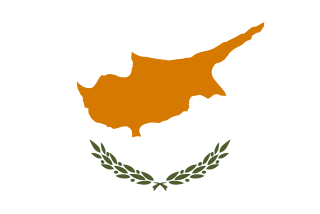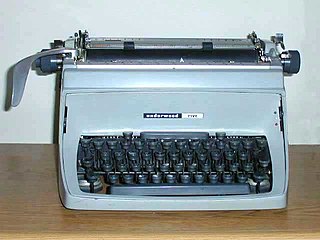
The British Museum, in the Bloomsbury area of London, United Kingdom, is a public institution dedicated to human history, art and culture. Its permanent collection of some eight million works is among the largest and most comprehensive in existence, having been widely sourced during the era of the British Empire. It documents the story of human culture from its beginnings to the present. It was the first public national museum in the world.
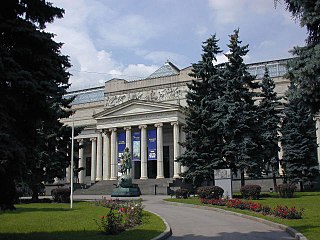
The Pushkin State Museum of Fine Arts is the largest museum of European art in Moscow, located in Volkhonka street, just opposite the Cathedral of Christ the Saviour. The International musical festival Sviatoslav Richter's December nights has been held in the Pushkin museum since 1981.

Limassol is a city on the southern coast of Cyprus and capital of the eponymous district. Limassol is the second largest urban area in Cyprus after Nicosia, with an urban population of 183,658 and a metropolitan population of 239,842. Limassol has been ranked by TripAdvisor as the 3rd up-and-coming destination in the world, in its Top 10 Traveler’s Choice Destinations on the Rise. The city is also ranked 89th worldwide in Mercer's Quality of Living Survey (2017). In the ranking published by the Globalization and World Cities Research Network, Limassol has been classified global city in the 4th category.

The Forbidden City is a palace complex in central Beijing, China. The former Chinese imperial palace from the Ming dynasty to the end of the Qing dynasty, it now houses the Palace Museum. The Forbidden City served as the home of emperors and their households as well as the ceremonial and political center of Chinese government for almost 500 years.

The Pergamon Museum is situated on the Museum Island in Berlin. The building was designed by Alfred Messel and Ludwig Hoffmann and was constructed over a period of twenty years, from 1910 to 1930. The Pergamon Museum houses monumental buildings such as the Pergamon Altar, the Ishtar Gate of Babylon, the Market Gate of Miletus reconstructed from the ruins found in Anatolia, as well as the Mshatta Facade.
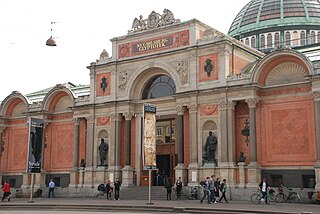
The Ny Carlsberg Glyptotek is an art museum in Copenhagen, Denmark. The collection is built around the personal collection of Carl Jacobsen (1842–1914), the son of the founder of the Carlsberg Breweries.

The American Museum of Natural History, located on the Upper West Side of Manhattan, New York City, is one of the largest natural history museums in the world. Located in Theodore Roosevelt Park across the street from Central Park, the museum complex comprises 28 interconnected buildings housing 45 permanent exhibition halls, in addition to a planetarium and a library. The museum collections contain over 33 million specimens of plants, animals, fossils, minerals, rocks, meteorites, human remains, and human cultural artifacts, of which only a small fraction can be displayed at any given time, and occupies more than 2 million square feet. The museum has a full-time scientific staff of 225, sponsors over 120 special field expeditions each year, and averages about five million visits annually.

The University of Pennsylvania Museum of Archaeology and Anthropology—commonly called the Penn Museum—is an archaeology and anthropology museum that is part of the University of Pennsylvania. It is located on Penn's campus in the University City neighborhood of Philadelphia.

The National Museum of Ireland is Ireland's leading museum institution, with a strong emphasis on national and some international archaeology, Irish history, Irish art, culture, and natural history. It has three branches in Dublin and one in County Mayo.

The Nicholson Museum at the University of Sydney is home to the largest collection of antiquities in both Australia and the southern Hemisphere. Founded in 1860, the collection spans the ancient world with primary collection areas including ancient Egypt, Greece, Italy, Cyprus, and the Near East. The Museum gallery is located in the main quadrangle of the University and is open to the public Monday to Friday from 10:00 am to 4:30 pm as well as the first Saturday of every month from 12 to 4 pm. Admission is free.

The National Museum of Natural History is a natural history museum administered by the Smithsonian Institution, located on the National Mall in Washington, D.C., United States. It has free admission and is open 364 days a year. In 2016, with 7.1 million visitors, it was the fourth most visited museum in the world and the most visited natural-history museum in the world. Opened in 1910, the museum on the National Mall was one of the first Smithsonian buildings constructed exclusively to hold the national collections and research facilities. The main building has an overall area of 1,500,000 square feet (140,000 m2) with 325,000 square feet (30,200 m2) of exhibition and public space and houses over 1,000 employees.
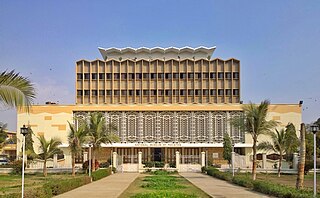
The National Museum of Pakistan is located in Karachi, Sindh, Pakistan.

The National Museum of Damascus is a museum in the heart of Damascus, Syria. As the country's national museum as well as its largest, this museum covers the entire range of Syrian history over a span of over 11 millennia, and displays various important artifacts, relics and major finds most notably from Mari, Ebla and Ugarit, three of Syria's most important ancient archaeological sites. Established in 1919, during King Faisal's Arab Kingdom of Syria, the museum is the oldest cultural heritage institution in Syria.

The Cyprus Museum is the oldest and largest archaeological museum in Cyprus.
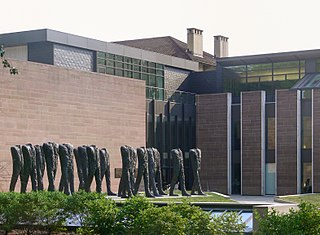
The Princeton University Art Museum (PUAM) is the Princeton University's gallery of art, located in Princeton, New Jersey. Founded in 1882, it now houses over 92,000 works of art that range from antiquity to the contemporary period. The Princeton University Art Museum dedicates itself to supporting and enhancing the University's goals of teaching, research, and service in fields of art and culture, as well as to serving regional communities and visitors from around the world. Its collections concentrate on the Mediterranean region, Western Europe, China, the United States, and Latin America.

The Vitebsk Regional History Museum is a museum in Vitebsk, Belarus.
The Rose Museum, located on the second floor of Manhattan's Carnegie Hall at 154 West 57th Street, is a small museum dedicated to the history of Carnegie Hall. The museum, which opened in 1991, was funded by the Susan and Elihu Rose Foundation and includes more than 2,500 feet of archives and more than a century of concert programs. The plan when the museum opened was to supplement its permanent collection with a series of rotating exhibits. The museum also focuses on the Hall's uncertain future following the growth of Lincoln Center and the sale of Carnegie Hall in the late 1950s leading to the campaign preservation spearheaded by Isaac Stern and New York City's purchase of the Hall in 1960 for a sum of $5 million as well as its being declared a National Historic Landmark in 1962.

The Shakespeare Birthplace Trust (SBT) is an independent registered educational charity based in Stratford-upon-Avon, Warwickshire, England, that came into existence in 1847 following the purchase of William Shakespeare's birthplace for preservation as a national memorial. It can also lay claim to be the oldest conservation society in Britain. Receiving no government funding or public subsidies, it is totally dependent upon the public for support, and relies on donations and the income generated from visitors.

The National Museum of Ireland – Archaeology is a branch of the National Museum of Ireland located on Kildare Street in Dublin, Ireland, and dealing with Irish and other antiquities. In general, the museum covers the history of Ireland from the Stone Age to the Late Middle Ages. Many important artefacts from the museum were featured in The Irish Times feature and book A History of Ireland in 100 Objects.


